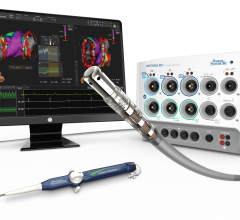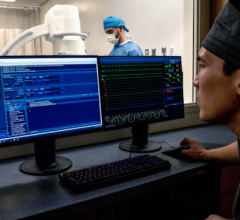
Estimates say up to 75 percent of patients with a pacemaker will need magnetic resonance imaging (MRI) over the course of their lifetime.[1] Yet as the industry has long been aware, MRIs can cause a number of adverse reactions when conducted on patients with a pacemaker. Aside from either the loss of pacing or inappropriate pacing, the MRI can cause current and heat to travel down to the heart muscle, resulting in local damage or life-threatening arrhythmias.

There are currently three major trends in cardiac nuclear perfusion imaging technology: advances in detector hardware, improved software and new radiotracers. These advances have enhanced the diagnostic performance of both single photon emission computed tomography (SPECT) and positron emission tomography (PET) perfusion imaging.

Computed tomography (CT) scanner manufacturers say they are tracking numerous trends in the cardiac imaging market that are influencing their development efforts. Among them are concerns over ionizing radiation dose, increasing use of CT to evaluate chest pain patients, development of CT perfusion imaging and the need to simplify cardiac imaging and workflow.
Providing exceptional cardiovascular care for patients to achieve the best possible outcomes is the number one goal for ...
November 22, 2011 — The thoracic aorta can pose major problems for endovascular repair when there are tortuous segments. Navigating an endograft through difficult territory can prevent its precise placement, especially in the aortic arch. At this year’s VEITH Symposium, Tilo Koelbel, M.D., Ph.D., described techniques that can be used in this situation.
November 22, 2011 — The question remains whether patency rates for heparin-bonded polytetrafluoroethylene (PTFE) grafts are better than traditional PTFE bypasses; whether these types of grafts should be used in all lower extremity bypass situations is also a question.
November 22, 2011 — The controversial subject of “indiscriminate” stenting to treat asymptomatic carotid stenosis (ACS) was addressed at the 38th annual VEITH Symposium.
Cardiac positron emission tomography (PET) is growing in popularity among cardiologists because it provides the ability ...
The use of 3-D/3-D registration from a syngo DynaCT Cardiac image and CT image was performed in syngo InSpace to help diagnose paravalvular mitral valve leakage. The imaging also served as procedural navigation aids.
November 21, 2011 — Boston Scientific has reached an exclusive agreement with Catheter Robotics Inc. (CRI) to market the CRI Amigo system, a remote-controlled catheter system and related accessories. The two companies will focus their efforts in select European countries.
November 21, 2011 — Stereotaxis Inc. announced the launch of Odyssey Cinema Studio, a clinical procedure online broadcast platform. The system provides a turn-key solution for hospitals to facilitate high definition remote physician collaboration and global medical education.
When performing radiofrequency (RF) ablation to treat cardiac arrhythmia, medical professionals must balance the safety ...
November 21, 2011 — Micell Technologies Inc. announced the release of preliminary data from the first-in-human clinical study of the MiStent Sirolimus Drug Eluting Coronary Stent System (MiStent DES).
November 3, 2011 — Infinitt North America announced that their Xelis Cardiac product has received clearance from the U.S. Food and Drug Administration, and is now widely available to the North American market.
November 21, 2011 – Royal Philips Electronics introduced Philips HeartStart FR3 automated external defibrillator (AED) in the United States for professional responders who treat victims of sudden cardiac arrest (SCA). The HeartStart FR3 is Philips' most advanced professional-grade AED and is the smallest and lightest one on the market. The rugged and reliable HeartStart FR3 is designed to help make lifesaving faster and easier for professional responders. The FR3 requires a prescription for use in the United States, and must be used under medical direction.
Change Healthcare Cardiology Hemodynamics is an integrated hemodynamic monitoring system for monitoring vital signs and ...
November 21, 2011 — VasSol’s Noninvasive Optimum Vessel Analysis (NOVA) technology provides physicians with detailed, quantitative information of blood flow through any vessel in the brain. Information provided includes velocity, volume and direction.
November 21, 2011: Each year, more than 600,000 Americans are stricken with a pulmonary embolism (PE), which is a clot in the lung. Without immediate help, almost half of these individuals may develop pulmonary hypertension, or worse, die. More Americans die each year from a PE than from AIDS, breast cancer and motor vehicle accidents combined. The current method of treatment has been high doses (100 mg) of a clot-dissolving drug administered intravenously over a two-hour period, or the use of anticoagulants. Unfortunately, high doses of clot-dissolving drugs have shown to cause bleeding, the worst of which is a hemorrhage in the brain. Anticoagulants help prevent more clot build up, but do not dissolve the blood clot. If your body does not dissolve the clot fast enough, the right side of the heart becomes enlarged trying to push blood past the clot and heart failure could occur.
November 21, 2011 - Frank J. Veith, M.D., founder and chairman of the VEITH symposium, the William J. von Liebig Chair in Vascular Surgery, Cleveland Clinic and New York University Medical Center, took a strong position against the current guidelines of the American Heart Association (AHA) that support the use of carotid artery stenting (CAS), as opposed to the more traditional open carotid endarterectomy (CEA), to treat symptomatic carotid stenosis (CS) in low to moderate risk patients. Veith explained to an audience of his peers that an important clinical trial for CAS, the CREST (Carotid Revascularization Endarterectomy vs. Stent Trial), had results that appeared to show that the stent procedure (CAS) and the open surgical approach (CEA) were equivalent. Veith argued that the study was in fact flawed in several ways and that the AHA guideline was misguided.

 November 22, 2011
November 22, 2011













